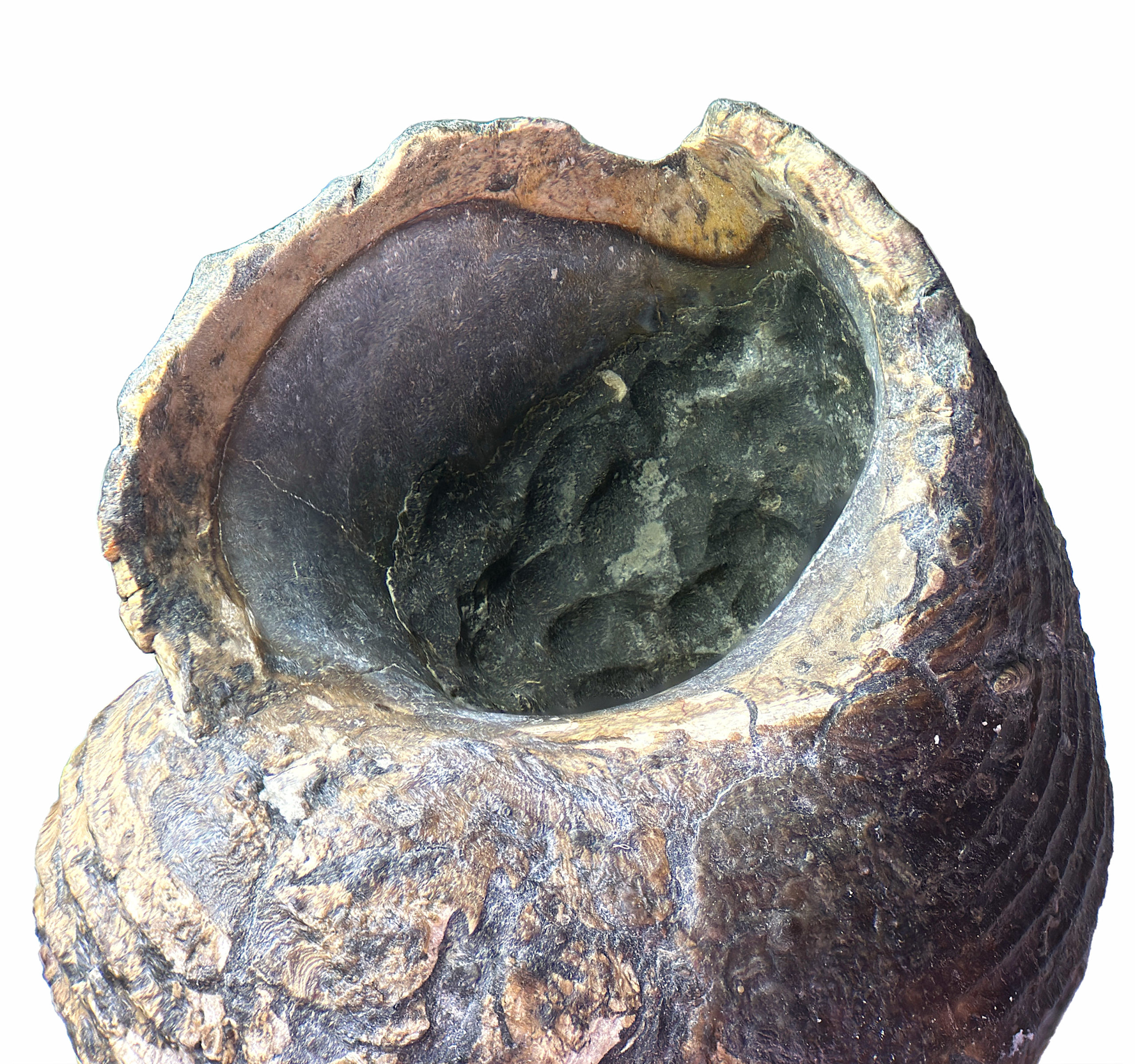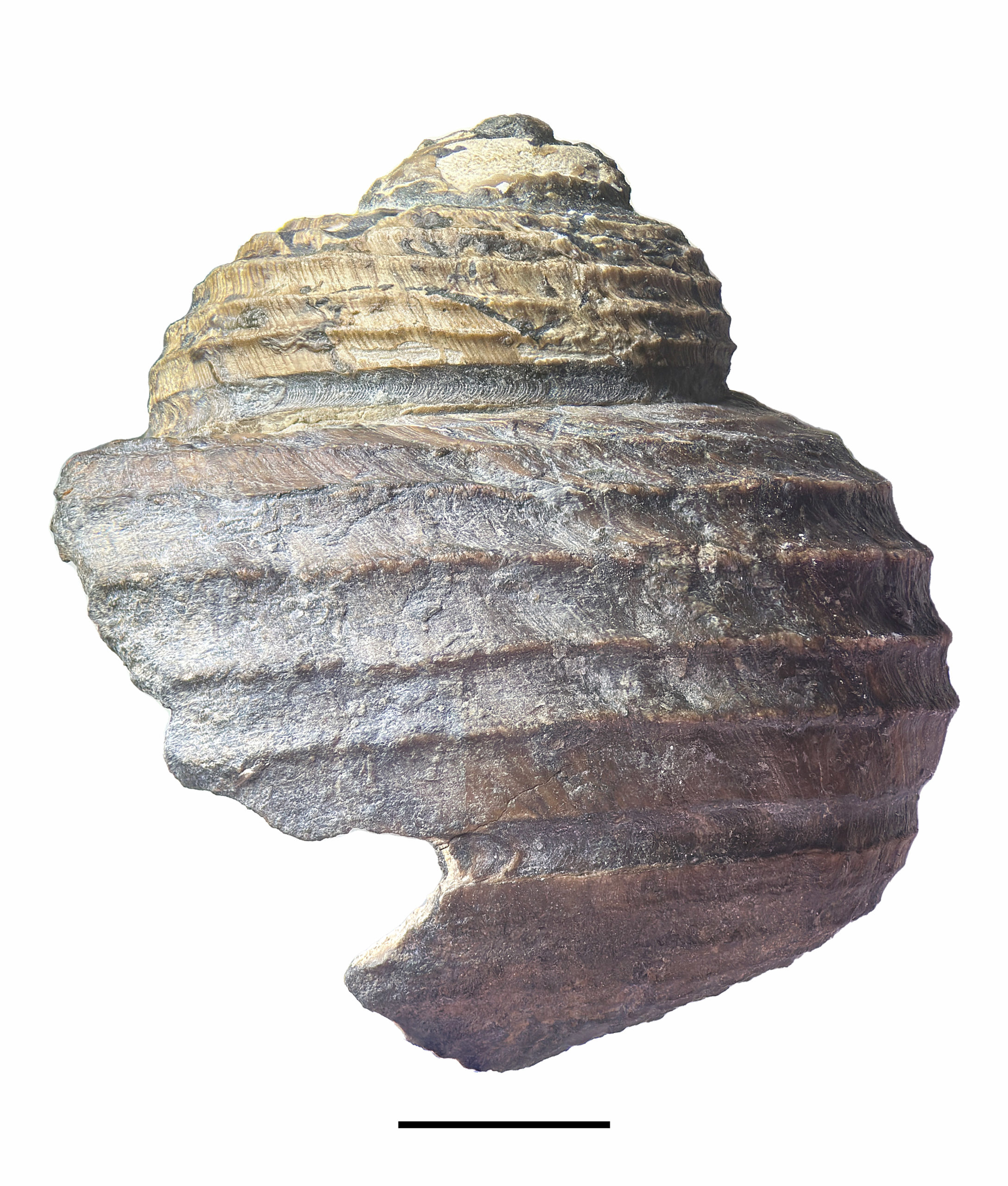The Vestigastropoda is a subclass of gastropods that live only in marine environments and have a nacreous layer. The group includes members of the superfamily Pleurotomarioidea, known for shells featuring a selenizone. The selenizone is a slit feature on shells that the living creature uses to aim its exhalant current. Several gastropods collected at the Pine Creek limestone in nearby Kittanning have this feature, and Shansiella is usually the largest one.
Aside from the selenizone feature, Shansiella fossils have a layer of nacre (nay-ker) deposited inside the walls of its body chamber. Nacre, also known as mother-of-pearl, is one of (if not the) most rigid natural materials on earth. This toughness comes from a series of hexagonal tabs of aragonite (calcium carbonate) arranged to prevent breakage. The pearly shimmer occurs because the thickness of these tabs is comparable to the wavelengths of visible light, causing disruption of light cast on the surfaces, giving the shimmering effect in non-fossilized material.
Observing fossilized nacre
Unfortunately, the nacre we are working with here has been buried for over 300 million years and has lost its shine. But, there are interesting things we can observe when cleaning and preparing specimens. The nacre layer covers most of the inside but does not extend entirely to the anterior shell edge. In the figure below, you see a specimen (CG-0424) with its nacre stopping (black material), forming a margin, shown as a light material. Furthermore, you can see a wide V-shaped depression where the selenizone would be.



Nacre in other fossil creatures
The first time I encountered fossilized nacre was in fossil pinnids. Most fossil pinnids die in life-position buried in the sand and thus appear as a cone shape. Compared to modern pinnids, all my fossil pinnids were missing the top-rounded portion of the shell (the posterior margin). It turns out that pinnids coat the bottom portion of the inside of their shells with nacre, and the top weaker portions break away after death. This also happens with Shansiella, where the anterior margin rarely preserves without the strong nacre layer to strengthen the shell.

Examples of this margin on modern Vestigastropoda
The genus Mikadotrochus provides a great look at modern slit shells. These usually live in deep waters and rarely wash up on beaches. The example below was trawled at a depth of 300 ft offshore from Japan. If you look into the aperture on the photo below, you can see a similar margin where the nacre stops short of the actual anterior margin.

References
Cherry, G., 2019, Cracking the mystery of nature’s toughest material, How mollusks engineered the most advanced nanostructure on Earth, Web
